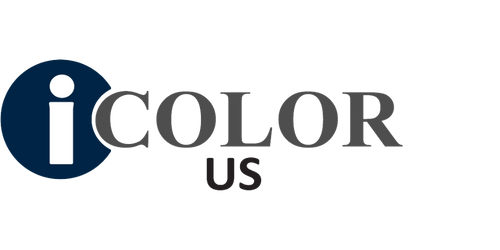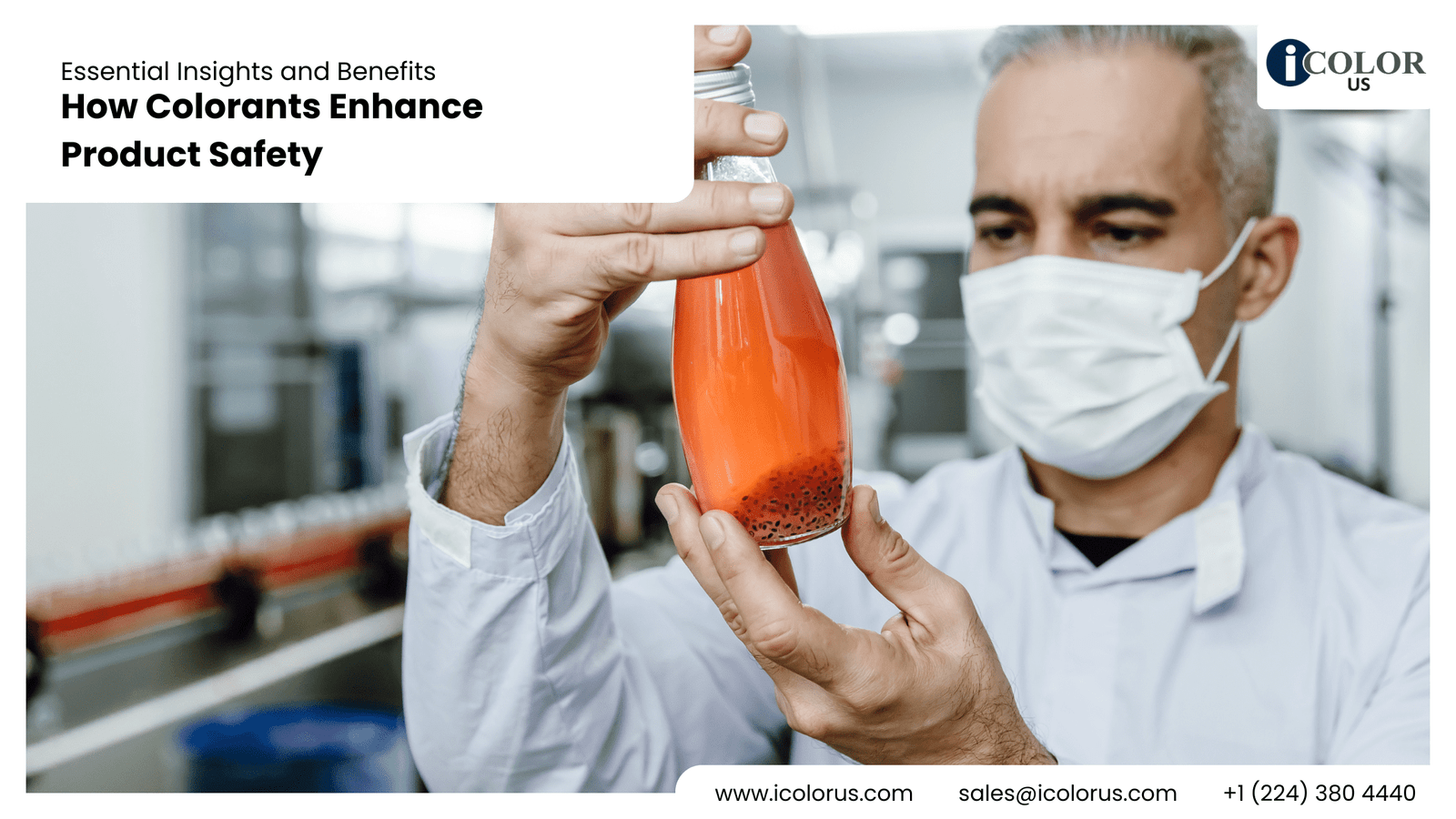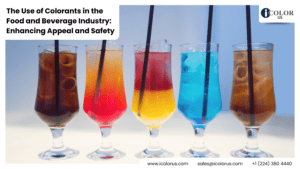Colorants and Product Safety – Outline
- Introduction
- Overview of colorants in products
- Importance of product safety
- What Are Colorants?
- Definition and types of colorants
- Natural vs. synthetic colorants
- The Role of Colorants in Product Safety
- Visual identification
- Preventing misuse and errors
- Colorants in Food Products
- Enhancing visual appeal
- Ensuring food safety
- Regulations and standards
- Allergen identification
- Colorants in Pharmaceuticals
- Importance in medication identification
- Reducing medication errors
- Standardized color coding
- Distinguishing similar-looking medications
- Colorants in Cosmetics
- Safety in beauty products
- Preventing contamination
- Batch identification
- Expiration indicators
- Colorants in Industrial Products
- Safety in manufacturing
- Hazard identification
- Safety markings
- Color-coded warnings
- Regulations and Standards for Colorants
- Global standards
- Regulatory bodies
- FDA
- EU regulations
- Health and Environmental Impacts of Colorants
- Safety assessments
- Biodegradable colorants
- Reducing environmental footprint
- Safe disposal practices
- Innovations in Colorant Technology
- Advances in natural colorants
- Sustainable practices
- Eco-friendly production methods
- Reduced chemical usage
- Case Studies: Successful Use of Colorants for Safety
- Food industry examples
- Pharmaceutical success stories
- Industrial safety implementations
- Challenges and Controversies
- Health concerns with synthetic colorants
- Balancing aesthetics and safety
- Future Trends in Colorants and Product Safety
- Emerging technologies
- Predicting future regulations
- Consumer Awareness and Education
- Importance of informed choices
- Resources for consumers
- Conclusion
- Recap of colorants’ role in safety
- Final thoughts on the importance of regulation and innovation
- FAQs
- What are the main types of colorants used in products?
- How do colorants help in identifying food allergens?
- Are natural colorants safer than synthetic ones?
- What regulations ensure the safety of colorants in products?
- How can consumers ensure the products they use are safe?
How Colorants Contribute to Product Safety
Introduction
Imagine walking into a grocery store and all the food packaging is devoid of any color. Sounds confusing, right? Colorants are more than just visual enhancers; they play a crucial role in product safety. From preventing medication errors to ensuring food safety, colorants are integral to the daily products we use. But how exactly do they contribute to safety? Let’s dive into the colorful world of colorants and explore their significant impact on product safety.
What Are Colorants?
Colorants are substances that impart color to various products. They can be either natural, derived from plants, animals, or minerals, or synthetic, created through chemical processes. Natural colorants, like beet juice or turmeric, are often preferred for their eco-friendly properties, while synthetic colorants are prized for their consistency and vibrancy.
The Role of Colorants in Product Safety
Colorants do more than just make products look appealing. They help in visual identification, preventing misuse and errors. Imagine if all medicines looked the same; it would be a nightmare to distinguish them. Colorants provide a visual cue that aids in identifying products quickly and accurately, thus enhancing safety.
Colorants in Food Products
Enhancing Visual Appeal
Food is as much a feast for the eyes as it is for the stomach. Colorants make food look more appealing, which is crucial for consumer acceptance. But beyond aesthetics, they play a vital role in safety.
Ensuring Food Safety
Regulations and Standards
Regulatory bodies like the FDA and the EU have strict guidelines for the use of colorants in food. These regulations ensure that only safe, approved colorants are used, protecting consumers from harmful substances.
Allergen Identification
Colorants can help identify allergens in food products. For instance, a color-coded system can indicate the presence of nuts or gluten, helping individuals with allergies avoid potentially dangerous foods.
Colorants in Pharmaceuticals
Importance in Medication Identification
In the pharmaceutical industry, colorants are crucial for medication identification. They help differentiate between different medications, reducing the risk of errors.
Reducing Medication Errors
Standardized Color Coding
A standardized color coding system helps healthcare professionals and patients identify medications easily. This reduces the risk of administering the wrong medication, enhancing patient safety.
Distinguishing Similar-Looking Medications
Colorants help distinguish similar-looking medications. For example, two different dosages of the same drug might be color-coded differently to prevent confusion and ensure proper administration.
Colorants in Cosmetics
Safety in Beauty Products
Colorants in cosmetics not only enhance appearance but also play a role in safety.
Preventing Contamination
Batch Identification
Colorants can help identify different batches of products, ensuring traceability and quality control.
Expiration Indicators
Some colorants change color over time, indicating when a product is no longer safe to use. This helps consumers avoid using expired products, reducing the risk of adverse reactions.
Colorants in Industrial Products
Safety in Manufacturing
In the industrial sector, colorants are used to enhance safety and efficiency.
Hazard Identification
Safety Markings
Color-coded safety markings on machinery and equipment highlight hazardous areas, helping prevent accidents.
Color-Coded Warnings
Colorants are used in warning signs and labels, ensuring that safety messages are clearly communicated and easily recognized.
Regulations and Standards for Colorants
Global Standards
There are global standards for colorants to ensure they are safe for use. These standards vary by region but generally include rigorous testing and approval processes.
Regulatory Bodies
FDA
The FDA regulates colorants in the United States, ensuring they are safe for consumption and use.
EU Regulations
The European Union has its own set of regulations governing the use of colorants, focusing on consumer safety and environmental impact.
Health and Environmental Impacts of Colorants
Safety Assessments
Colorants undergo thorough safety assessments to ensure they do not pose health risks to consumers. These assessments consider factors like toxicity, carcinogenicity, and allergenicity.
Biodegradable Colorants
Reducing Environmental Footprint
Biodegradable colorants are designed to break down naturally, reducing their impact on the environment.
Safe Disposal Practices
Proper disposal practices are essential to minimize the environmental impact of colorants. Consumers and manufacturers alike play a role in ensuring colorants are disposed of safely.
Innovations in Colorant Technology
Advances in Natural Colorants
There have been significant advances in natural colorant technology, making them more vibrant and stable.
Sustainable Practices
Eco-Friendly Production Methods
Innovative production methods are making colorants more sustainable, reducing their environmental footprint.
Reduced Chemical Usage
Efforts to reduce chemical usage in the production of colorants are ongoing, contributing to safer, more sustainable products.
Case Studies: Successful Use of Colorants for Safety
Food Industry Examples
In the food industry, colorants are used to enhance safety. For instance, color-coded packaging can indicate the presence of allergens or expiration dates.
Pharmaceutical Success Stories
Pharmaceutical companies have successfully implemented color coding to reduce medication errors, improving patient safety.
Industrial Safety Implementations
In the industrial sector, color-coded safety markings have proven effective in preventing accidents and ensuring a safe working environment.
Challenges and Controversies
Health Concerns with Synthetic Colorants
There are ongoing debates about the safety of synthetic colorants, with some studies suggesting potential health risks.
Balancing Aesthetics and Safety
Balancing the need for visually appealing products with safety considerations is a challenge. Regulatory bodies and manufacturers must work together to find the right balance.
Future Trends in Colorants and Product Safety
Emerging Technologies
Emerging technologies are set to revolutionize the use of colorants, making them safer and more effective.
Predicting Future Regulations
Future regulations are likely to focus on enhancing safety and reducing environmental impact, driving innovation in colorant technology.
Consumer Awareness and Education
Importance of Informed Choices
Consumers need to be informed about the colorants used in products to make safe choices. Education is key to ensuring consumer safety.
Resources for Consumers
There are numerous resources available to help consumers understand the safety and impact of colorants. From government websites to consumer advocacy groups, information is readily accessible.
Conclusion
Colorants are more than just a pretty face; they play a crucial role in ensuring the safety of the products we use every day. From food and pharmaceuticals to cosmetics and industrial products, colorants help prevent errors, ensure compliance with regulations, and protect consumers. As technology advances, we can expect even safer and more sustainable colorants in the future. Stay informed and choose wisely to ensure the products you use are safe and reliable.
FAQs
- What are the main types of colorants used in products?
- Colorants can be natural, derived from plants, animals, or minerals, or synthetic, created through chemical processes.
- How do colorants help in identifying food allergens?
- Color-coded systems can indicate the presence of allergens like nuts or gluten, helping individuals with allergies avoid dangerous foods.
- Are natural colorants safer than synthetic ones?
- Natural colorants are often considered safer and more eco-friendly, but synthetic colorants are prized for their consistency and vibrancy.
- What regulations ensure the safety of colorants in products?
- Regulatory bodies like the FDA and the EU have strict guidelines and standards to ensure colorants are safe for use.
- How can consumers ensure the products they use are safe?
- Consumers should stay informed, check for regulatory approvals, and use resources from government and consumer advocacy groups to make safe choices.





